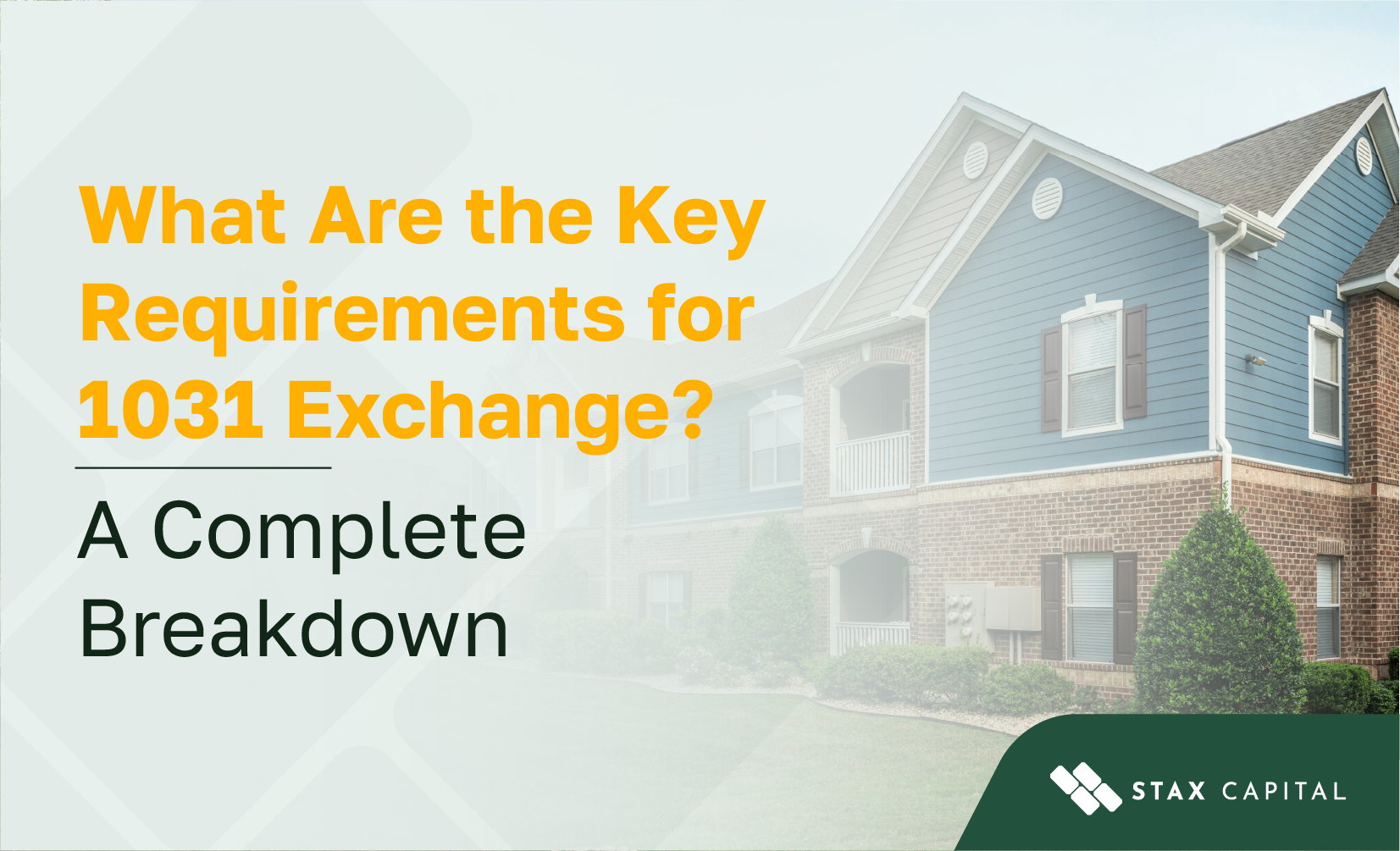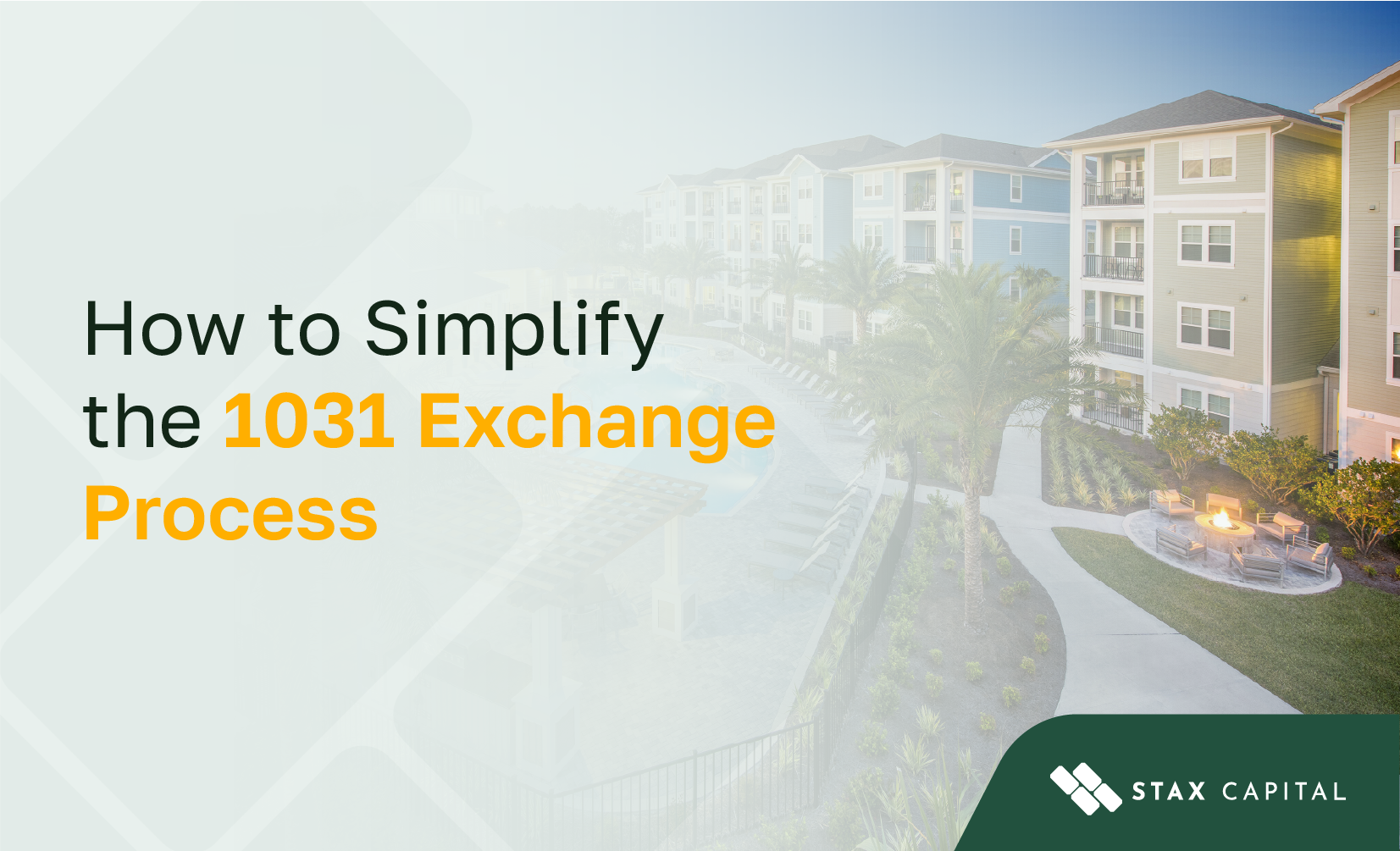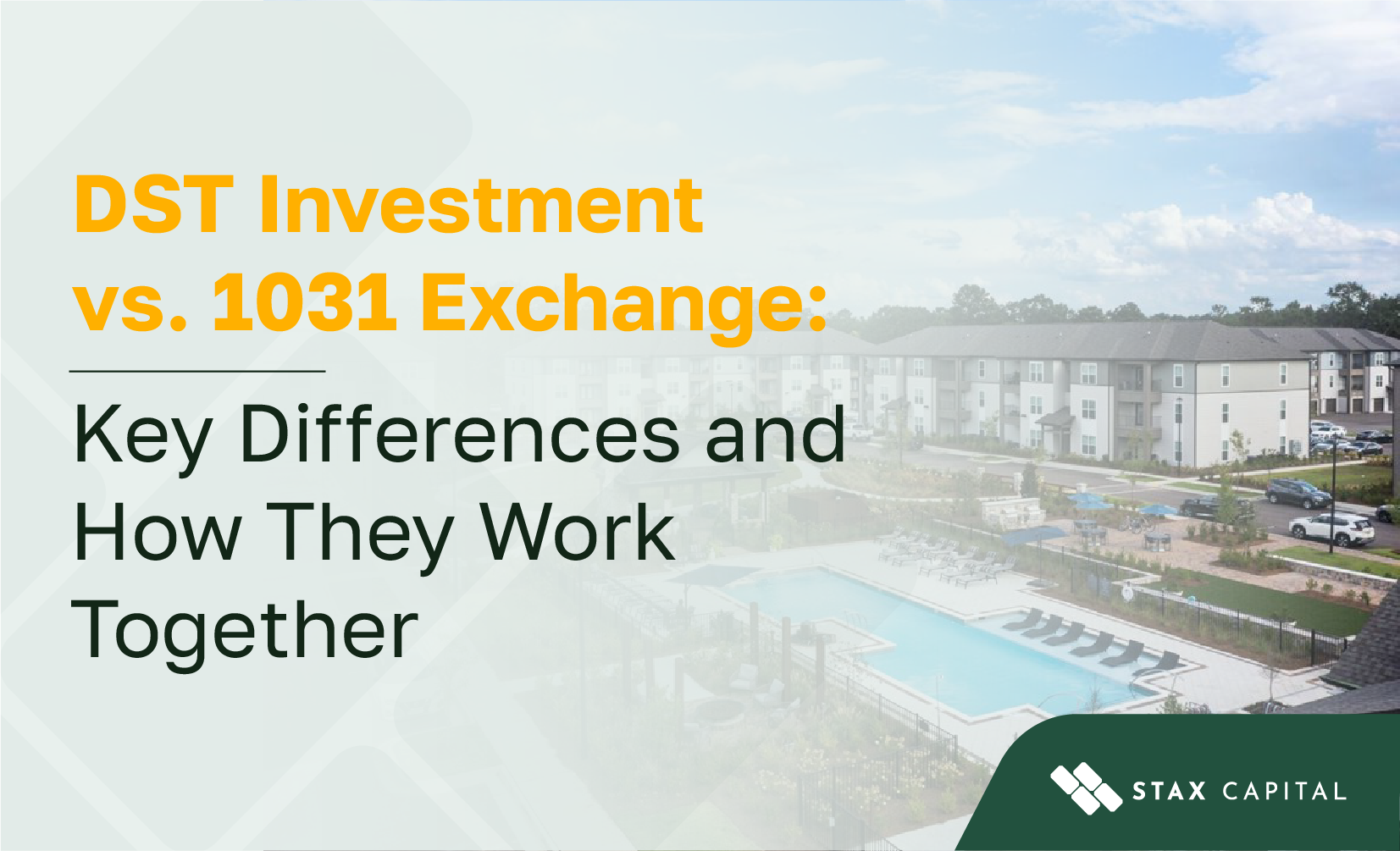1031 DST Exchanges | All the Steps You Should Follow

Exchange Tips
In life, success can come in different ways. One of the biggest successes a person can achieve is building something that will benefit not only you but also the generations that follow. Doing so ensures that with each generation, the path to success is much easier. This can be accomplished by using DSTs.
Over the years, real estate has proven to be arguably the best sector for multigenerational wealth. However, as much as it is lucrative, it comes with its own set of challenges regarding property management. This is why investors choose to use Delaware Statutory Trusts (DSTs). Understanding the 1031 DST exchanges steps can help facilitate the process, allowing these investment vehicles to enable people to become passive real estate owners.
More importantly, they allow investors to diversify and reduce risk as investors benefit from anonymity and lawsuit protection. Due to the enticing nature of DSTs, the sector has been growing significantly in recent years. In 2017, DST investments totaled $1.97 billion, which would rise to $2.57 billion in 2018.
Ordinarily, after selling property, you are required to pay taxes. One of the key advantages of DSTs is that they enable you to capitalize on Section 1031 of the IRS code. Under this code, real estate investors can defer capital gains taxes. This is achieved by reinvesting the proceeds of the sale into one or up to three properties of equal or greater value. Doing so allows you to build wealth for you and your beneficiaries without incurring tax costs.
However, the IRS has very strict rules that must be followed in order to qualify for tax deferral. As a result, the process is complex, stressful, and time-sensitive.
Do you want to build wealth through a DST? Read on to find out the key steps you should be following to protect and grow your portfolio.
1. Determine if a 1031 Exchange Is Right for You
For real estate investors, tax-deferred 1031 exchanges are a tremendous opportunity. However, as with all other investments, it carries risk. If you make any mistake in the process, the 1031 exchange may fail. At times, due to these restrictions and eagerness of investors, the replacement property purchased may not be suitable for your goals.
Before you go down this path, it is important to first determine if it is suitable for you. Some of the things to consider include liquidity needs, the structure of property ownership, market conditions, potential tax liability, financial and lifestyle aspirations, and debt considerations.
To get a clear picture of the sector and the 1031 DST exchanges steps, and determine whether it's right for you, schedule an appointment with an investment consultant experienced in 1031 DST Exchanges.
2. Take the Plunge
The whole idea of building wealth through DST exchanges is based on the premise that property appreciates in value, and you will turn in a profit after the sale. Along with the profits, you can also use the potential capital gains taxes to reinvest.
If you are just starting, you will have to identify a suitable property to buy. Ideally, you should look for an undervalued property or one that you can remodel and sell at a profit. There are also other strategies you can use depending on your goals.
Once you feel the property is ready and can turn in a good profit, have it listed for sale. In the listing paperwork, your realtor will include your desire for a 1031 exchange.
3. Begin Your Search for Replacement Property
As you know, there are strict measures to follow for a 1031 exchange to be successful, and there is a timeline. After selling your property, you have 45 days to identify one or a maximum of three replacement properties.
Three requirements should be met for a 1031 exchange to be eligible. These are:
- The property purchased must be of equal or greater value than the property sold
- All the proceeds you get from selling must be used for the purchase
- The property you purchase and the one sold must be classifiable as like-kind
Also, to ensure that the purchase can be linked to the sale, you only have 180 days to make the purchase to complete a 1031 exchange. Therefore, once you put your property up for sale, begin the search for replacement properties as time will be of the essence.
4. Develop a Tax-Deferred Transition Strategy
The primary goal of a 1031 exchange is to avoid capital gains taxes to boost your reinvestment kitty. With a fixed timeline for achieving this and rigid requirements, it is imperative to have a comprehensive transition plan in place.
Creating such a plan will reduce the chances of mishaps occurring along the way that will put the exchange at risk. And, even if something were to come up, you will be better prepared.
5. Inform Your Estate Planning Attorney, Tax Advisor, and Financial Advisor about the 1031 Exchange
Considering that your goal is to build wealth for your beneficiaries and the complexities of 1031 exchanges, you should have a reliable team to help you with the process. Such a team should comprise at least an estate planning attorney, a CPA, and a financial advisor.
Each brings experience in different fields that are crucial for a 1031 exchange. To ensure everything goes according to plan, always consult with your team before making key decisions.
6. Finalize the Contract
Once you find a suitable buyer for the relinquished property, enter into a contract with them. This will free you up to proceed to the next steps of the process.
7. Find a Qualified Intermediary
As per IRS requirements, for a 1031 exchange to take place, a qualified intermediary must be involved. The intermediary's role, also known as 'accommodator' or 'facilitator,' is to ensure that it is the proceeds from the relinquished property that will fund the purchase.
After the sale, it is the qualified intermediary will receive the funds. They will hold on to the funds until a suitable property is identified. For the process to be eligible, you must open an exchange with a qualified intermediary before the relinquished property is sold.
8. Close the Deal on Your Replacement Property
Remember, after selling the relinquished property, you will only have 45 days to identify a replacement property. After this period elapses, there will only be another 135 days to close the deal. Even if everything seems to be going smoothly, ensure that the transaction is completed as soon as possible.
9. Notify Your Tax Advisor
After the 1031 exchange process is completed, notify your tax advisor. This will ensure that they can prepare property tax forms accordingly. If a 1031 exchange spills over into the next tax year, wait until the process is over to file your annual taxes. However, you should file for an extension for filing taxes.

Cost of Doing a 1031 Exchange
There are very little costs involved with 1031 exchanges, especially if you factor in the taxes you will save. Being a real estate transaction, you can expect the usual cost involved with buying and selling property.
The only unique cost you will incur is that for paying the qualified intermediary. Costs associated with qualified intermediaries include legal reviews and brokerage fees. All such costs involved with the exchange should be defined before the 1031 DST exchanges steps begin.
What are the Benefits of 1031 Exchanges?
Deferral of taxes is the primary benefit that comes with 1031 exchanges. Some of the taxes you will be able to defer include:
- Federal capital gains
- State capital gains
- Depreciation recapture tax
- Net investment tax
However, tax deferral is not the only benefit you will get from 1031 exchanges. Others include:
- Your beneficiaries will not incur inheritance and estate tax
- Greater investment kitty and better cash flow
- Lower risk threshold due to diversification
- Access to properties with low-management requirements
- Access to a wide range of properties and markets
Benefits of Managing Beneficiaries With a DST
Other than being an efficient investment vehicle, DSTs are great tools for managing beneficiaries. To begin with, you will have full control as to who gets what and at which proportion. Should anything change over time, you can make adjustments as you deem fit. This includes adding new beneficiaries or removing others.
Thanks to the flexibility and high degree of control, it is easy to divide beneficial interests, which can even be issued for minors. However, in the case of minors, a legal representative must be appointed.
Another key benefit of DSTs comes in the form of asset protection. The compartmentalized approach to owning property ensures that risks do not spill over to other assets.
Also, your personal assets will be protected, and you will also be protected from lawsuits. Understanding DST 1031 explained can further enhance your knowledge of these benefits and how they can be utilized effectively.
Getting the Best from DST 1031 Exchanges
Should things go as plan, you can generate significant wealth for you and your beneficiaries using a DST. However, there are crucial elements that will come into play. First, you need to have clear objectives and a well-defined strategy for achieving them. This should be accompanied by a sound investment partner to help you make the right choices.
Are you looking for quality investments to increase your nest egg? Stax Capital is a company specialized in alternative investments. Reach out to us today to learn more about the investment opportunities available.



Share: